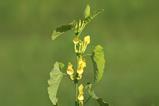Before getting in the festive spirit, check your festive spirits

The holiday season often brings festive foods, celebratory drinks and sought-after gifts. Savvy gift givers and recipients know that holiday shopping comes with a warning and it’s not ‘watch your spending’. It’s ‘beware of counterfeits’. Fake Fenty, phoney PlayStation, bogus Birkin, replica Rolex and grifted gift cards. Whether gift giver or receiver, confirming a gift is authentic means keeping up to date with the latest scams and playing detective – exhausting work in an already hectic holiday season.
After such work, every seasonal sleuth deserves a nice snack and potable, secure in the knowledge that festivities won’t be ruined by frauds. For the colder winter days, perhaps a hot spiced rum… except… has that been given the once-over? Agricultural fraud could mean spirits purchased for the holidays are not all they purport to be.
Cold nights, hot rum
Hot spiced rum has been described as ‘perfect for this time of year’ and ‘an ideal holiday indulgence’. A range of recipes exist, but the 1862 classic How to Mix Drinks by Jerry Thomas calls for sugar, Jamaica rum, a mix of allspice and cloves, and a ‘piece of butter as large as half a chestnut’ to be placed in a tumbler and topped with hot water.1 Many regions produce rum, each with its own character, but Jamaican rums are considered unique and highly desirable.
Rum in general is a bootlegger’s favourite and rum fraud is global. Two days before Christmas 2019, an operation led by the European Anti-Fraud Office seized nearly 150,000 bottles of rum in the Netherlands worth an estimated €2 million (£1.8 million). Fake rum isn’t just a scam, it can be lethal. A seizure in Kingston, Jamaica, in 2017 revealed counterfeit rum producers were using a bathtub gin type process that yielded products as dangerous as those produced during America’s Prohibition. For safety and economics, verifying spirits is an essential task and subject to intense research.
Golden rum is the go-to target for spirits scammers. Not because it’s a go-to for winter libations, but because it’s the go-to rum, period. Following distillation and dilution to achieve the desired alcohol percentage, golden rum is aged in oak barrels – usually American white oak and French red oak – previously used in the production of whiskey, wine or brandy. Blending might be done to achieve particular organoleptic (eg taste, colour, aroma and feel) qualities desired by the manufacturer.
A buyer may think they’re getting top-shelf, barrel-aged rum the colour of amber, when what they’ve really got is a cheaper hooch, dyed and flavoured in an attempt to match a pricier brand. However, the process of producing golden rum seems to enable its fingerprinting. This was the focus of recent work by José-Raúl Belmonte-Sánchez and coworkers from Spain’s University of Almería, who developed a method coupling ultra-high-performance liquid chromatography with Orbitrap mass spectrometry and multivariate analysis.2
Put to the test
The team examined 30 rums from 10 different countries, including Jamaica, assembling as much information from manufacturers on raw materials, ageing time and barrel type as possible (though this information was not always available). These three categories of information served as classification groups in multivariate analysis techniques such as partial least squares discriminant analysis.
Distinguishing the manufacturing country proved trickier than distinguishing the manufacturing process. Indeed, researchers observed no differences between countries of manufacturers. Barrel type, raw material and age were far more illuminating. Rums that were aged in American oak barrels clustered tightly together, distinct from the overlapping region of French and mixed (French and American) oak barrel aged rums, as well as rums not aged in barrels. For those rums where the manufacturer did not specify the barrel type, Belmonte-Sánchez et. al posit the “clear graphical proximity” to American oak barrel aged rum indicates the type of barrel used. Whether the raw material was molasses or sugar seems easy to spot based on the researchers’ analysis, with rums made from unknown raw materials falling mainly into the molasses group.
The team examined 30 rums from 10 different countries, including Jamaica, assembling as much information from manufacturers on raw materials, aging time and barrel type as possible (though this information was not always available). These three categories of information served as classification groups in multivariate analysis techniques such as partial least squares discriminant analysis. Rums that were aged in American oak barrels clustered tightly together, distinct from the overlapping region of French and mixed (French and American) oak barrel aged rums, as well as rums not aged in barrels. Whether the raw material was molasses or sugar seems easy to spot based on the researchers’ analysis, with rums made from unknown raw materials falling mainly into the molasses group.
Multivariate analysis also made quick work of rum age, with unaged rums clearly distinguishable from the aged ones. Seven years was an important age in this work, with rums older and younger than this grouping into two clusters with some overlap. One explanation for this overlap could be blending. If the rum tested was a blend of multiple ages, the age given by the manufacturer could refer to the older or younger rum in the bottle – it all depends on a country’s governing legislation. White rums, also known as ‘light’ or ‘silver’ rums, which are usually aged less than a year,3 were also successfully differentiated from the other rums analysed in this study. Molasses versus sugar cane classification of these white rums indicated to the researchers the use of ‘different or alternative’ raw materials to the golden rums.
The researchers then tested whether their multivariate models would correctly classify a validation set of rums. Based on raw material, 94% of the set was correctly classified, while 100% of the rums were correctly classified based on barrel type or age. Rum runners trying to pass off knock-off golden rum might just be caught red-handed in time for Christmas.
References
1 J Thomas, How to Mix Drinks: Or, The Bon-vivant’s Companion, Containing … Directions for Mixing All the Beverages Used in the United States, Together with the Most Popular British, French, German, Italian, Russian, and Spanish Recipes. Dick and Fitzgerald, 1862
2 J R Belmonte-Sánchez et al, J. Agric. Food Chem., 2019, 67, 1302
3 T Neijens and I Boons, Rum: The Complete Guide. Lannoo Meulenhoff, Belgium, 2018

















No comments yet